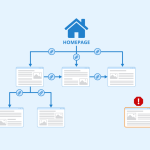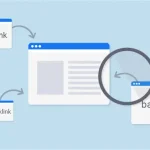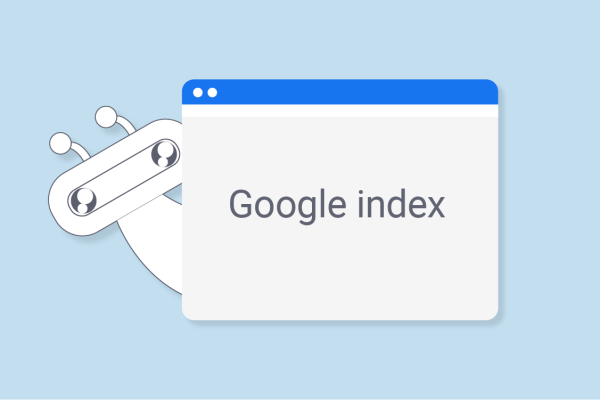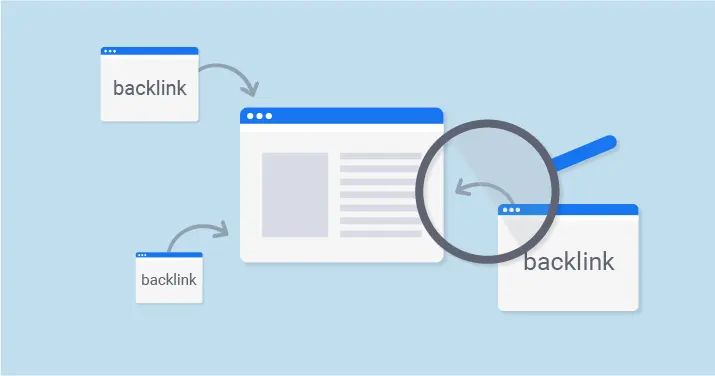Thanks to many strategic applications on your website, it is possible to catch trends and gain speed. Sitemap, which is one of these applications, makes it easier for search engines and users to navigate websites, helping internet pages to be crawled much faster, thus increasing their visibility in search engines. The sitemap, which is of great importance in terms of SEO practices, ensures that your pages are placed regularly and easily found on Google.
Sitemap is a user-friendly application in terms of in-page navigation experiences as well as easily finding your pages on search engines. A sitemap, which is used effectively for the SEO strategy of websites, makes your content stand out on search engines. In this way, users can easily navigate your pages through links. So, how to create a sitemap and why is it so important? You can find all the details about the sitemap in our article.
What is a Sitemap?
The sitemap basically creates the page layouts and links of the websites. While these links provide the transition between the pages within the website, they also provide the opportunity to link through search engines. In this way, search engine crawling budgets, that is, “Crawl Budget Optimization” compliance is ensured and development is achieved in a shorter time with less cost.
After the sitemaps are prepared and edited, it is sent to Google Search Console, allowing search engine bots to access the sitemap. The creation of sitemaps, on the other hand, is subject to rather simplified applications. In this way, it is possible to create your sitemap manually or with the help of some extensions. Recommended here; It is the creation of the sitemap not manually, but with a regularly updated automation.
XML Tags in Sitemap
After editing your sitemap, the most important issue is to transfer your file to Google search engine bots. This transfer may require you to send large files. Submission of sitemaps with an average size of more than 50 MB is not accepted by Google. The file length you will send to Google can be up to 50 MB and a maximum of 50,000 URLs.
Therefore, you can file and forward the sitemap you created for your site in small pieces. In this case, you will need to create multiple sitemaps. This is where XML comes in and makes it easy to pass your split file directories. You can divide your sitemaps that you have created on your website into file directories and send them with the help of XML tags. You can submit your sitemap index files in the following forms:
After separating the sitemap you created for your website into file directories, you can submit it to Google. For the process to work properly, you need to make sure that all your sitemaps are saved in the same environment. In this way, Google can easily redirect your file directories. You can submit up to 500 sitemaps in this way on Google Search Console.
How to Create a Sitemap File?
It is of great importance to create an up-to-date sitemap on your website and to keep it up-to-date with every change. Sitemap is a process that should be applied functionally to facilitate the visit of the website by users and to generate organic traffic. Changes to the website content or newly added content may create a visibility problem for the entire site if they are not included in the sitemap. So, how to create a sitemap? Let’s take the step-by-step sitemap creation process together with its important points…
Sitemap XML File Preparation (URL Collection)
When creating a sitemap, the URL of all pages should be listed. The easiest way to list URLs is to create a site with the help of Screaming Frog. The most important point to consider when listing manually or with different extensions is to determine which pages will be included in the index. If there is an issue with page speed at this point, if the page is a blank or erroring page, it should not be indexed. Indexing defective pages will reduce page speed and quality. This will cause search engine bots to leave your page in the long run. In addition, the pages to be indexed should be informative for your brand.
One of the most important points when creating a sitemap is XML coding. After the URLs that need to be indexed for the sitemap are determined, they are appropriately edited and encoded in XML format. You can perform the URL encoding process in the following order:
- As a first step, open the <urlsetxmlns=”http://www.sitemaps.org/schemas/sitemap/0.9″> tag to add the URL.
- Add the URL you want to add to your index using the <url> / <loc> tags.
- You can also use certain customized tags in cases where you want to add more details on your sitemap. These tags are; are special tags such as <lastmod> for the date the page was last modified, <changefreq> for the frequency with which the page was modified, and <priority> for the importance of the page in listing.
- Finally, you can close with the </url> / </urlset> tags.\
Creating a Sitemap with Screaming Frog
The easiest way to create a sitemap is to code XML codes through an extension called Screaming Frog. You can create your sitemap in 5 steps using the application, which has a simple interface. First of all, it should be noted that Screaming Frog can be used with its free version to generate sitemaps with less than 500 pages. Here is our ranking for sitemap generation via Screaming Frog:
After installing Screaming Frog, enter Mod > Spider.
Add the URL you get from the home page of your website to the “Enter URL to Spider” section and click Start.
After the scanning process is completed on the application, your process is completed with the “Completed” written warning in the lower right corner. If the number is over 500 in this field, it will be necessary to create separate directories. However, if 499 and below, go to Sitemaps > XML sitemap for the next step.
At this stage; You can disable elements that are ignored by Google, such as <priority>, <lastmod>, and <changefreg>.
Finally, you can save your sitemap by clicking the “Next” box.
At this point, you can transfer the sitemap you created for your website to Google.
How to Submit Sitemap to Google?
After creating your sitemap, the most important part of the job will come into play. The sitemap you create will display its function by being crawled through Google Search Console efficiently and quickly. That’s why you need to export the list you created to this extension of Google. So how is this done? You can submit your sitemap to Google Search Console by following the steps below:
- First, you need to verify your website in order to access Google Search Console. In this way, you can access the platform to scan your site into the application.
- Log in to Google Search Console from the login page you reach later.
- You can see your website in the sidebar, as you will have defined your own website when you log in. Continue by selecting your website from this section.
- On the page that opens, go to the Sitemaps section on the left menu.
- If there is a previously used sitemap in the Sitemaps section, remove it.
- After clearing this part, you can now add the sitemap you prepared. Enter the “Add new sitemap” section.
- Add the directory with your sitemap and tap the “Submit” box.
- By following this process, you can complete the process of submitting the sitemap you created to Google.
Relationship Between Sitemap and Crawl Budget
The reason for creating a sitemap is basically to help search engine bots make sense of the structure of the website, that is, to create an SEO-compatible website. The crawling of websites by search engine bots is achieved by the link between the sitemap and the crawl budget. Therefore, the sitemap is one of the active components in terms of SEO strategy. So what is the relationship between sitemap and Crawl Budget?
Crawl budget refers to how often Google bots crawl which pages on websites. This scanning process proceeds through the sitemap, the internal link flow of the website and the information architecture. Statements made directly by Google say that a website that does not have a sitemap can also be crawled by search engine bots, but in reality, the sitemap makes the job of search engine bots much easier with its directive nature.
The sitemap is in direct relation with the crawl budget in that it facilitates the effective use of the crawl budget and actually presents the organic growth targeted pages directly to the search engine bots.
The fact that Google bots reach all the pages on the website that are requested to be scanned as soon as possible indicates that the crawling budget allocated to the website is used effectively and that it spreads it to the entire site. As a natural consequence of this situation, the groundwork for all page structures targeted for organic growth within the scope of SEO strategy is prepared by Google.















![Effective Steps to Build Natural Backlinks – [5 Steps]](https://elseo.us/wp-content/uploads/2022/06/backlinks-600x400.webp)
